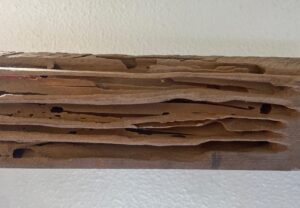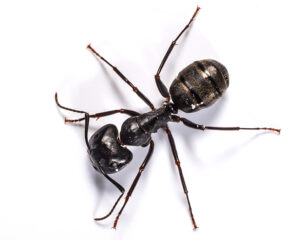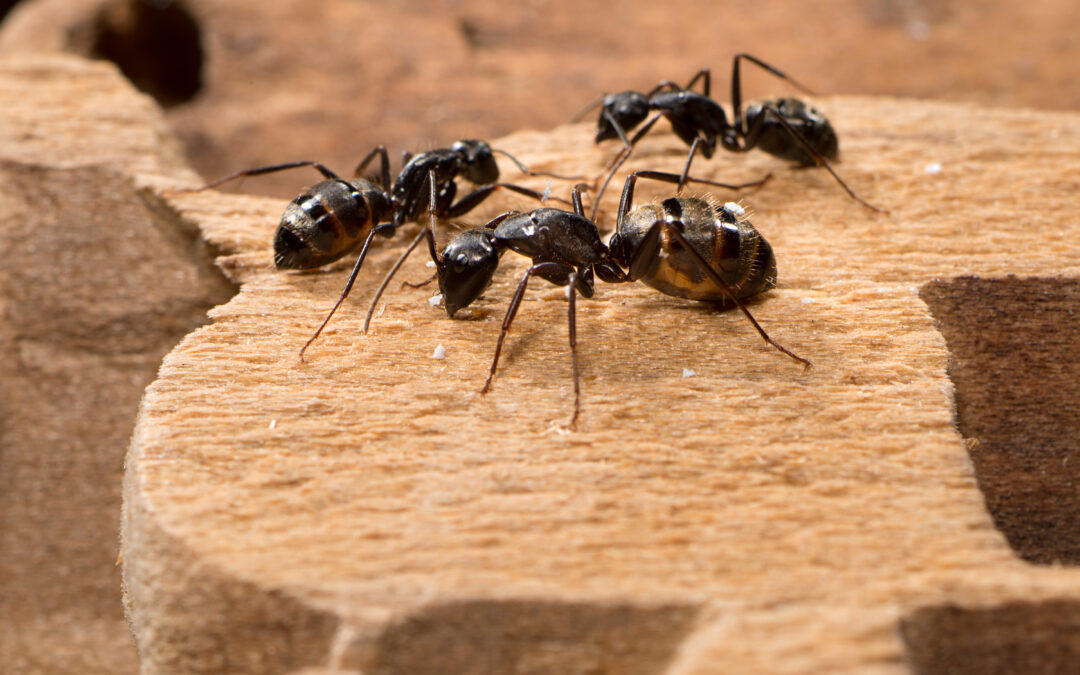Here in the Willamette Valley, nestled between the Cascade and the Coastal mountain ranges of Oregon, we have two things in abundance: water and trees. With all this timber lying around you would think, “wow what an amazing habitat for termites. I sure wouldn’t want to build a house there!”
While we do have termites, they aren’t as big of a threat as you may assume. We have the Dampwood Termite, which only infests wet rotting wood, and the Subterranean Termite, which although they infest sound wood they typically go for exposed wood that is in contact with the soil.
For the former there is no reason to perform a chemical treatment. Simply drying out the area and removing and replacing damaged infested wood will take care of the problem. Subterranean termites on the other hand can do serious damage to an otherwise structurally sound home or building. Luckily, they are relatively uncommon in this area, particularly when compared to California or Texas where termites are the #1 wood destroying organism (WDO). No… termites aren’t number one around here, neither are beetles.
When it comes to the most prolific WDO in the Willamette valley, the crown belongs to the Carpenter Ant.
Unlike the termite, carpenter ants don’t actually eat the wood in which they lives. They simply mine it out to create caverns for storing food and raising their young. Carpenter ants are active throughout the spring and summer, and then they go dormant when temperatures drop in the fall.

Carpenter ant damage wood damage.
What does this have to do with anything you ask? It’s still February and it was just snowing? Yes, both these things are true, but here’s the thing, we’re already getting calls from people who are seeing carpenter ants inside. Even though it was below freezing this morning!
What does this mean? Well, in nature the warmth of the nest would correlate with the temperature outside. Add the human element to and things start going sideways. The days are getting longer and sunnier, and you couple that with the fact that people still have their heating system cranked on their homes, the ants start to wake up. Your house is a lot warmer in February than a dead tree stump would be!
They come out like “awesome its springtime, let’s get to foraging and other ant stuff”. Then they try to go outside and natures like “psyche, it’s way too cold out here for you to do anything!” That’s when you start seeing them in the living space. The human equivalent of this would be your dog wakes you up because it has to go outside to do its business, but it decides to do this only 15 minutes before your alarm would have gone off, so you just start a pot of coffee and wander around for a bit listening to the morning news. This is the grumpy carpenter ants showing up inside.

Single large carpenter ant
This also means something else! Since its still too early for ants to be out foraging and its also too early for winged reproductives to be out swarming, that means that the ants are coming from inside the house! Yes! That’s the trick. They were already in the house last fall when the ants went dormant. That means that there’s an active infestation your home.
So, if you start to see large ants within your home during the next couple of months, please don’t ignore them. That there is a clear indication of a problem, a red flag if you will. With a positive ID for carpenter ants and a discovery timeframe of January till early March you could safely assume an infestation and should schedule a carpenter ant treatment in the spring with your local pest control professional. I’d suggest Good Earth Pest Company, but I might be biased 😉
I am also those grumpy ants,
Adam Hiddleson



